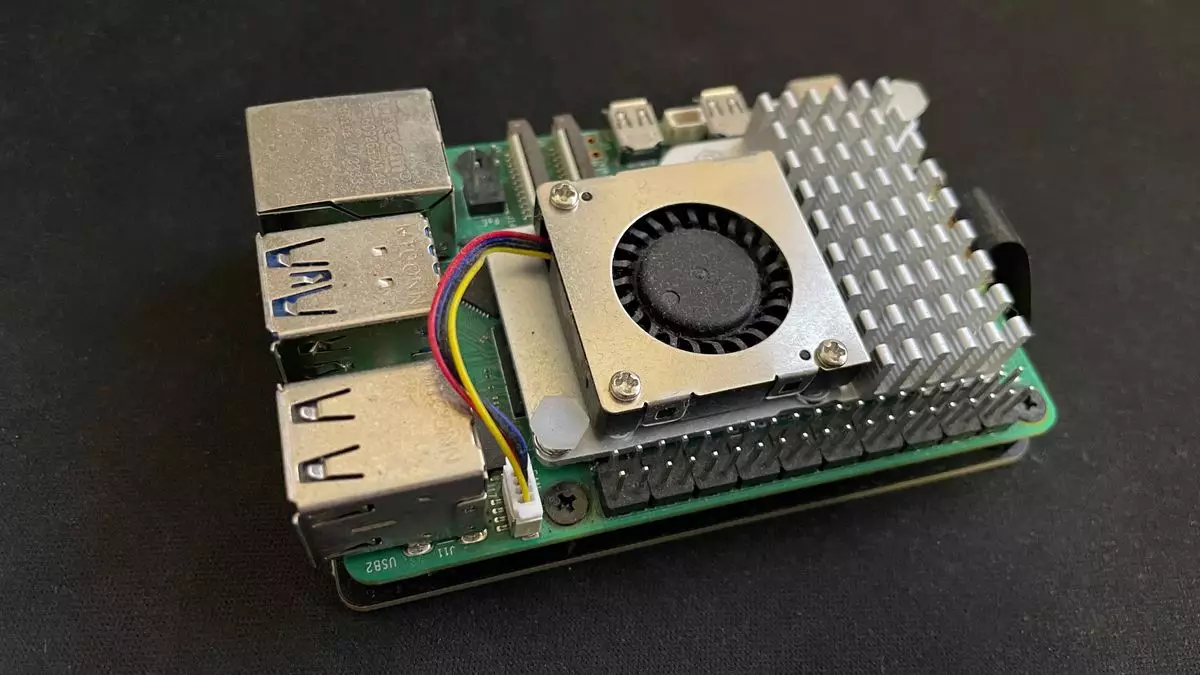The Raspberry Pi 5, launched in 2023, has generated excitement for its groundbreaking features, chief among them being its support for PCIe drives. This development raises the question: could the Raspberry Pi finally transition from a simple educational tool to a robust desktop alternative? Despite initial limitations concerning official SSD solutions, the recent announcement by Raspberry Pi Ltd, in collaboration with Tom’s Hardware, has unveiled a product that can facilitate this transformation.
From Concept to Reality: The Promise of PCIe
At its core, the inclusion of PCIe compatibility in the Raspberry Pi 5 is significant. This feature allows users to connect various PCIe devices, turning what was once a mere educational platform into something capable of handling more intensive tasks. The potential for utilizing PCIe SSDs offers a performance upgrade that can make the Raspberry Pi a contender in the realm of desktop computing and even gaming. Yet, upon its initial launch, there was a lack of official solutions, leaving enthusiasts to navigate a market filled with third-party options.
The introduction of the M.2 HAT+ serves as a bridge—allowing for connections to SSDs while still showcasing the need for external hardware. Prior to the official SSD kits, users experimented with various setups, like using Pimoroni’s NVMe Base with compatible SSDs to meet their performance needs. While these solutions proved effective, they also highlighted the complexities and potential pitfalls of relying on non-official products.
What has piqued the interest of many is the idea of gaming on the Raspberry Pi 5. The comparison to its predecessor, the Raspberry Pi 4, reveals marked performance improvements, particularly with additional cooling solutions. Users have reported running older titles like Doom 3 at playable framerates, albeit at reduced resolutions. This revelation showcases the improved processing power of the Pi 5 but emphasizes the importance of storage as a limiting factor.
Traditional MicroSD cards, while functional, fall short in terms of speed and data reliability, making SSDs a desirable upgrade. The newfound ability to incorporate SSDs could substantially enhance gaming performance, user experience, and application load times, thereby making the Raspberry Pi a legitimate desktop or gaming system.
The Official Solution: Raspberry Pi’s SSD Kits
With Raspberry Pi Ltd’s recent release of official SSDs and kits, a more seamless integration for users is now possible. These new products have simplified the upgrade process significantly. Standalone and bundle options are available at competitive prices, making them accessible for a broader range of consumers. The specs are promising too, with the entry-level 256GB SSD priced at $30 and featuring impressive read and write capabilities, while the 512GB alternative is similarly priced and offers enhanced performance metrics.
The ability to tweak the system configuration file to unlock PCIe 3.0 speeds from the Pi 5—even though it officially supports PCIe 2.0—offers an exciting opportunity for tech-savvy users to push the device even further. This kind of flexibility in a compact system can change the way enthusiasts utilize the Raspberry Pi.
While gaming is a thrilling possibility, the applications for the new SSD kits extend far beyond that. Many users are likely to recognize the potential of utilizing the SSD for hosting retro gaming environments, such as Retropie or Recalbox. The compact nature of Raspberry Pi systems makes them ideal for dedicated gaming consoles running multiple emulators, unleashing a world of nostalgic gaming experiences.
Moreover, these SSDs can serve as a reliable storage solution for other applications like media centers, file servers, and more, leveraging the performance benefits of SSD technology. This versatility further establishes the Raspberry Pi 5 as a potent system for a multitude of purposes.
The Raspberry Pi 5 stands at a crossroads, where innovation and accessibility merge to offer users unprecedented capabilities. With the introduction of official SSD solutions, the barriers that once limited the device’s potential are quickly falling away. This development not only enhances gaming capabilities but also opens doors for various other applications, solidifying the Raspberry Pi 5’s role in modern computing.
As users continue to explore the boundaries of what this compact and cost-effective device can achieve, it’s evident that the Raspberry Pi 5 is more than just a build-it-yourself kit—it’s a gateway to a world of creativity, experimentation, and advancement in technology.

